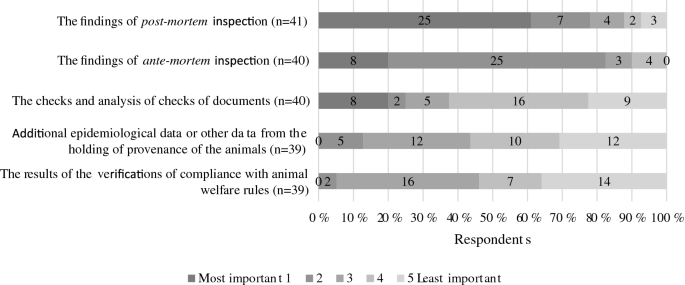Additional post-mortem inspection procedures and laboratory methods as supplements for visual meat inspection of finishing pigs in Europe—Use and variability
Abstract
In the EU, a post-mortem inspection of finishing pigs comprises visual inspections of the carcass and offal followed by additional examinations, such as palpation and incision of parts, when needed. Moreover, it can include various laboratory tests. Since European meat inspection is regulated by the EU, one may assume that post-mortem inspection is performed in the same way in the Member States. However, previous studies showed that variations exist. This article shows the results of a survey performed in September 2020 on how visual meat inspection of finishing pigs is applied in Europe. By using a questionnaire, palpations, incisions and other procedures for 10 gross pathological findings and laboratory methods applied by official veterinarians to evaluate the fitness of meat for human consumption were assessed. We received 44 responses from 26 European countries. Most respondents reported that visual meat inspection was a generally applied inspection method. The main reason for not applying visual meat inspection was export requirements. The most important reasons for applying palpations and incisions in addition to visual inspection were findings detected in ante- or post-mortem inspection. There was considerable variation in the use of palpations and incisions, other post-mortem procedures and laboratory tests to assess meat fitness for human consumption. The respondents mentioned some country-specific practices, but we also observed variations within the responding official veterinarians that could not be explained by country of origin or years of work experience. Additional detailed studies on the variation are needed before harmonisation of meat inspection procedures are attempted.


 求助内容:
求助内容: 应助结果提醒方式:
应助结果提醒方式:


